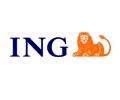

Energy
Oil prices remain well supported, with ICE Brent still gravitating around US$75/bbl. The market will be keenly following today’s OPEC+ meeting, where expectations are that the group will agree on a supply increase in the region of 500Mbbls/d. However, Kazakhstan has reportedly said that the group is considering whether to increase output in August or September. If the latter, that will likely be enough to push the market higher. While attention is clearly focused on what OPEC+ may do in the short term, according to Reuters, the OPEC+ Joint Technical Committee has said that there is a risk that the global market slips back into surplus when the OPEC+ deal ends in April 2022.
Yesterday’s EIA report was once again constructive, showing that US crude oil inventories fell by 6.72MMbbls. That marks the sixth consecutive week of declines and takes total crude oil inventories to a little more than 452MMbbls, the lowest level since March last year. In addition, crude oil inventories at Cushing continue to edge lower, falling by 1.46MMbbls. A tightening in inventory at the WTI delivery hub continues not to only support WTI timespreads, but also the narrowing in the WTI/Brent spread, which is now trading at a discount of around US$1.60/bbl. On the trade side, crude oil imports fell by 537Mbbls/d, while exports edged up by 66Mbbls/d. Meanwhile, refiners increased utilisation rates by 0.7 percentage points to 92.9%. Despite the increase in refinery run rates, there were only marginal changes in refined product inventories, with gasoline stocks increasing by 1.52MMbbls, whilst distillate fuel oil inventories decreased by 869Mbbls.
Metals
Copper managed to close higher on the last trading day of June, leaving the market up 21% over the first half of the year. However, the overall complex traded in a fairly narrow range yesterday, with investors cautious ahead of Friday’s US jobs report.
The recent rally in nickel has come amid a stronger stainless steel market across China and elsewhere in Europe, with attractive stainless steel margins on offer for producers, particularly for the nickel-rich 300-series. There has also been plenty of noise recently regarding tighter supply. According to Bloomberg, strike action at Sudbury, Vale’s Canadian operations, has been extended. The strike was first announced at the beginning of June, following the rejection of a proposed contract by employees. The extension of this action heightens the risk of larger production losses. The Sudbury operations, specifically the Copper Cliff Nickel Refinery produces nickel pellet (a source of class 1 nickel) which can be used in both electroplating and batteries. According to Vale, finished nickel production at the Sudbury operations totalled 12kt in 1Q21 (+7.1% QoQ), while full-year 2020 production was 43.2kt (-15% from 2019), which accounts for less than 2% of global refined supply. However, given that it is one of the few major pellet producers, a prolonged strike may lead to structural tightness in this specific market. According to Bloomberg, the nickel briquettes premium in the North American market has already increased. Meanwhile, investors are also awaiting further clarification from Indonesia, which may affect the class 2 nickel market. According to Reuters, Indonesia is discussing a plan to limit the construction of smelters producing nickel pig iron (NPI) or ferronickel, which would likely cap class 2 supply growth from Indonesia. In addition to this, there were also unsubstantiated rumours that Indonesia may consider restricting exports of these two products.
Agriculture
In its annual acreage report, the USDA reported fairly conservative estimates on US acreage which helped buoy sentiment yesterday for both corn and soybeans. Stronger prices have been helpful for acreage; however, this has been offset by poor weather during the planting season. The agency revised higher its corn acreage estimates from 91.1m acres to 92.7m acres (+2% YoY). But that was much smaller than 93-96m acres the market was expecting. For soybeans, the USDA kept acreage estimates unchanged at 87.6mn acres (still up 5% YoY), while the market was expecting an increase of around 1-2m acres.
Source: ING